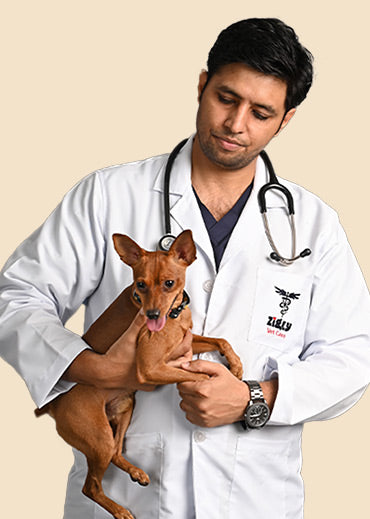As pet parents, we quickly learn that our furry companions speak a different language, one of subtle cues, small changes, and silent signals. Unlike us, pets can’t say when something hurts or feels off. That’s why paying attention to early warning signs becomes part of loving them well.
Not every sneeze or skipped meal is a cause for alarm but there are some signs no pet parent should ever ignore. Spotting them early and acting fast can mean a world of difference, often preventing a minor issue from turning serious.
Here are 10 important signs that your pet may need to see a vet and why it’s better to go sooner than later.
1. Changes in Appetite or Water Intake
You know your pet’s eating habits better than anyone. So, when they suddenly stop eating or drinking, it's worth paying attention. A skipped meal once in a while isn’t unusual, especially in hot weather or after a busy day. But if your pet goes more than 24 hours without food or you notice they’re barely drinking water, it could point to digestive upset, infection, or underlying illness.
What to do: Call your vet, especially if the loss of appetite is paired with other symptoms like vomiting or lethargy.
2. Frequent Vomiting or Diarrhoea
Occasional vomiting or loose stool happens, it could be something as harmless as a change in food. But repeated vomiting, diarrhoea that lasts more than a day, or any sign of blood is a serious concern. It could be an infection, parasites, food poisoning, or even something your pet swallowed by accident.
Why it matters: Pets can get dehydrated quickly, especially small breeds, puppies, or kittens.
3. Unusual Tiredness or Lethargy
Every pet has lazy days. But if your usually bouncy dog seems sluggish, or your playful cat just sleeps all day and ignores toys or treats, it’s not just fatigue, it could be a sign of something more. Lethargy is often a symptom of fever, pain, or systemic illness.
Don’t wait and watch: It’s always safer to let a vet evaluate what’s going on internally.
4. Limping or Difficulty Moving
If your dog suddenly refuses to go on walks or your cat is hesitant to jump, something might be wrong. It could be a sprain, injury, arthritis, or even a neurological issue. Pets are experts at hiding pain, so by the time it’s visible, the problem may already be advanced.
What helps: An early visit can prevent further strain and ensure your pet gets the right treatment or rest.
5. Trouble with Pee or Poop
Is your pet straining to urinate? Are they suddenly having accidents indoors, or is their stool very dark or unusually runny? These are clear signs that something isn’t quite right. Urinary tract infections, bladder stones, constipation, or dietary issues could all be the reason and some, like blockages, can be life-threatening.
Pro tip: Always observe changes in bathroom habits closely, no one likes it, but it tells a lot!
6. Coughing, Wheezing, or Breathing Difficulty
If your pet starts coughing persistently, breathes heavily even while resting, or makes wheezing sounds, don’t delay. Respiratory issues can escalate quickly. It might be allergies, a throat infection, or a more serious condition like pneumonia or heart disease.
Even mild changes in breathing should be checked out promptly.
7. Sudden Weight Loss or Gain
Noticing a change on the weighing scale or in the way your pet looks and moves? Rapid weight loss can signal issues like diabetes, thyroid problems, or even cancer. Sudden gain, on the other hand, could indicate hormonal changes or organ dysfunction.
Early intervention = better outcomes. Don’t wait till it becomes noticeable to others.
8. Skin Lumps, Rashes, or Hair Loss
A patch of dry skin or shedding could be seasonal. But if you see red bumps, scabs, bald spots, or a lump under your pet’s skin, it needs attention. While many skin conditions are harmless, some can be signs of allergies, fungal infections, or even tumors.
Tip: Monitor size, shape, and whether the lump seems to grow or bother your pet.
9. Behavioural Changes or Sudden Aggression
Is your cuddly cat suddenly hiding all day? Has your friendly dog become jumpy or snappy without reason? Behavioural changes are often your pet’s way of saying something’s wrong. Pain, discomfort, anxiety, or neurological changes may be at play.
You know your pet best, trust your gut when something feels off.
10. Excessive Drooling or Bad Breath
Sure, dog breath is a thing. But very bad breath, visible tartar, bleeding gums, or excessive drooling are often signs of dental trouble. Dental diseases are painful and can lead to infections spreading to other organs if left untreated.
Prevention is key here: Regular dental checkups save a lot of pain (and cost) later.
Conclusion
As pet parents, we often hesitate, thinking “let’s see for another day or two.” But early action often leads to faster recovery, less stress, and fewer complications. At Zigly, we understand that your pet is family and every symptom, no matter how small, deserves attention. That’s why Zigly Vetcare is designed to offer not just clinical care, but compassionate care. With state-of-the-art diagnostics, experienced veterinary professionals, and a calming, pet-first environment, we’re here to catch problems early and keep tails wagging longer.
Whether it’s a routine check-up, a sudden concern, or just peace of mind, Zigly is here for it all. Visit your nearest Zigly Experience Centre today!




